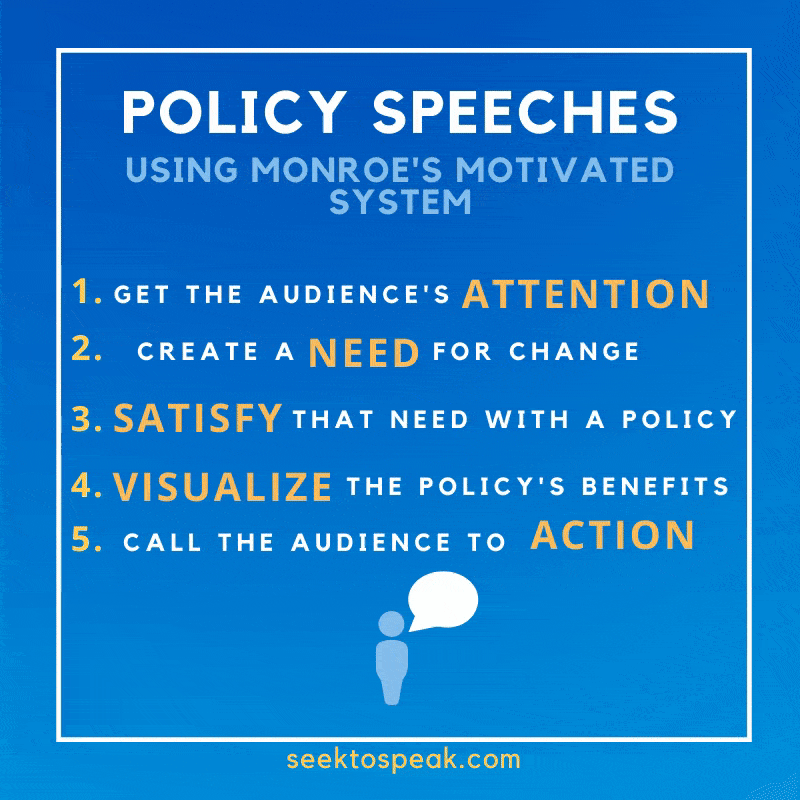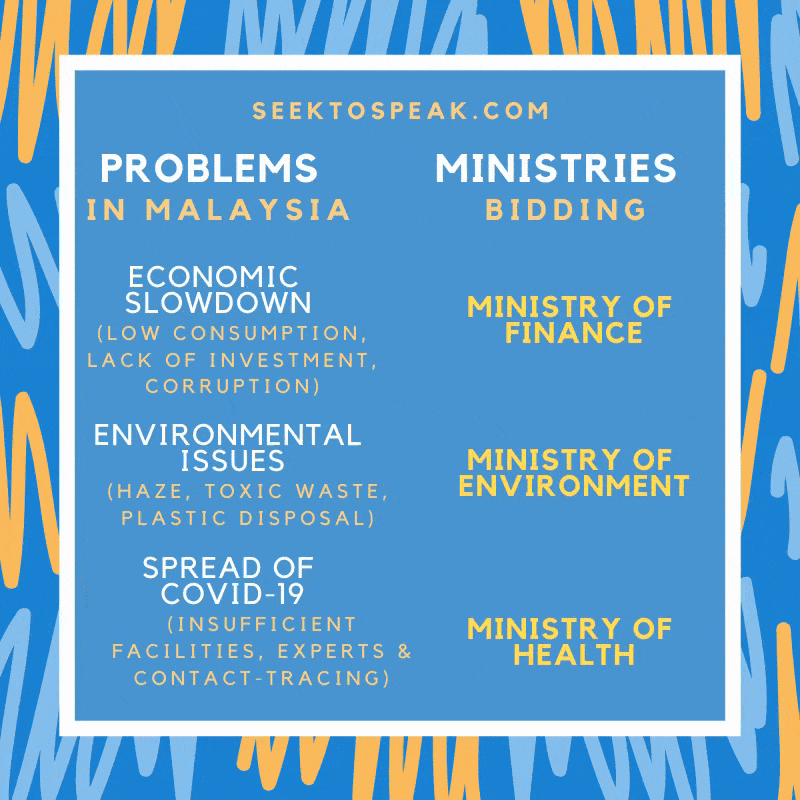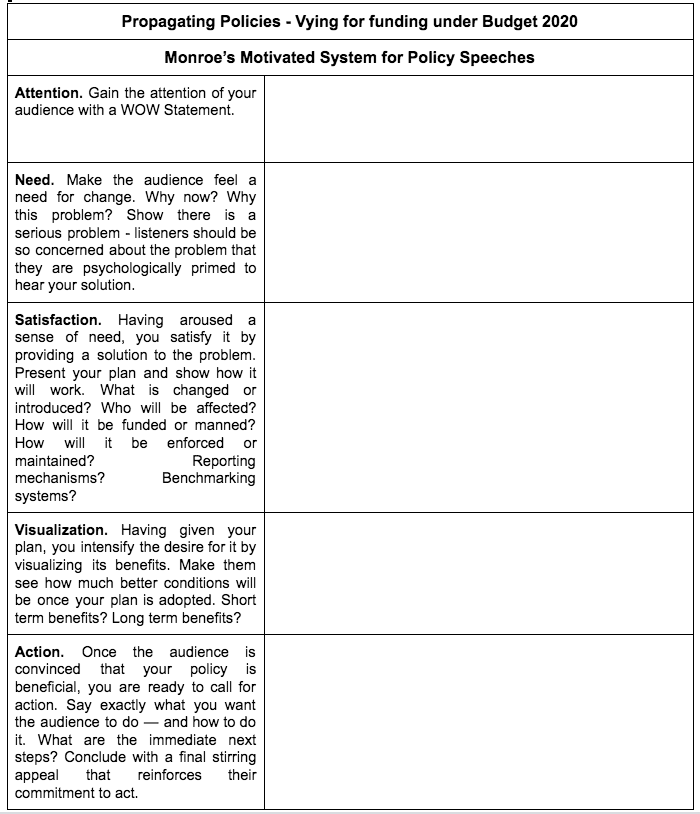When Budget 2020 was announced on 11 October 2019 by then Finance Minister, Lim Guan Eng, the country was abuzz with discussions. Who were the biggest winners and losers? What’s in it for me? Who or what else is going to be taxed? Six months later, we are already feeling the effects of Budget 2020 with the launch of the E-Tunai Rakyat Program, garnering almost 7.4million applicants and disbursement of RM222million.
However, at the launch of Budget 2020 last year, all I could think about was the length of the speech, taking up 3 hours of the Dewan Rakyat’s time – equivalent to 88 pages (!!!) of text. These thoughts inspired me to teach my students about Malaysia’s budget and how funds are allocated. Those lessons then inspired this mini-series regarding policies and people, and how best to capture them in a speech.
In this installment, I will be discussing the best way to present a persuasive speech in support of a new policy. In other words, how to structure a policy speech.
Typical Organisation Methods
Conventional methods of organization for policy speeches include a variation of the following elements, and always in groups of three, explained in the following manner:
-
Problem, Cause, Solution: Highlighting the problem, illustrating the causes and presenting a solution
-
Need, Plan, Practicality: Showing a need for change, explaining the new planned policy and showing how it will work in practice
-
Challenge, Action, Result: Presenting the challenge in status quo, the proposed action to take and painting a positive picture of the results
-
Pros, Cons, Conclusion: Highlighting the advantages of the solution, the negative effects of not implementing the same and concluding on the need for change
While these conventional methods are great for impromptu speeches and as narrative prompts during the research stage, they’re not great for presenting policy speeches. See here for other standard templates for impromptu speeches.
Monroe’s Motivated Sequence
Instead, the best organization of information in a policy speech would be the one introduced by Alan H. Monroe, a professor of speech at Purdue University, called Monroe’s Motivated Sequence. Developed in the 1930s and inspired by the human thinking process, the goal of this sequence was to motivate the audience into immediate action. Politicians have used this method in the past to introduce and gain support for new policies.
According to Alan H. Monroe, a policy speech must contain these 5 (not 3!) elements and in the following order, to achieve the optimum outcome:
1. Attention.
The first element would always be to get the attention of the audience to get them to listen – what I call a “WOW” statement. It is something so startling, so thought-provoking, so moving, that the audience is immediately drawn in by your speech. It can come in the form of a personal anecdote, rhetorical question, memorable quote, or shocking evidence.
2. Need.
Once you got the people’s attention, you need to make them feel the need for a change. You can do this by explaining the problem and its adverse effects in the worst possible manner. Support it with examples, paint a terrible picture and create an urgency to act now, and to act fast. Show them how existing policies have failed and how the status quo has worsened.
If you do a good job, the audience would be so horrified by the problem that they are more than happy and eager to hear the solution. This stage preps the audience for the white knight in shining armor to come and save the day.
3. Satisfaction.
As you have aroused a need for a change, you must satisfy this need by providing listeners with a solution to the problem. At this point, they would be eager to listen to your answer. During the Satisfaction stage, your proposal should be introduced, giving enough details to ground it to reality and ensure its practicability. The plan must not be too general as this will run the risk of sounding naive. Your proposal must be a feasible one.
4. Visualization.
Once you’ve explained your proposal and its methodology, the audience needs to visualize the world in which your solution exists. The Visualization stage is where you will list down the positive impact of your proposal, if implemented. Illustrate how the problem will be solved, show its benefits on stakeholders, and how any drawbacks will be addressed.
5. Action.
If the above steps are done well, your audience is now poised to do something about it. They’re horrified by the problem, they agree to your solution and are keen to live in a world you had just visualized for them. Now it is time for you to tell them precisely what to do about it so they will be stirred into action. The previous stages of your speech are rational and logical but this is where you bring your speech to a rousing close by instructing (no, demanding!) them to do something about it. How can they help? What can they do? It can be as simple as agreeing to the cause or as concrete as going out to vote for a particular politician.

For example,
On Malaysia’s lack of financial literacy, |
|
Attention. |
|
Need. |
Lack of financial literacy caused by:
Which then increases:
|
Satisfaction. |
E.g.
|
Visualization. |
|
Action. |
|
Try this!
On this subject, I divided my class into groups and asked them to pretend to be different government ministries in Malaysia. I then highlighted various problems faced by Malaysians and asked them to come up with solutions that are ministry-specific. They are to explain their proposals using Monroe’s Motivated System. The best speeches will receive the necessary funding from the treasury board, i.e., me! Using the above system, my students managed to present some very well-thought-out ideas!
Want to do the same? Consider the following problems in Malaysia, and as the corresponding bidding ministry, come up with a persuasive policy speech on the issue.


